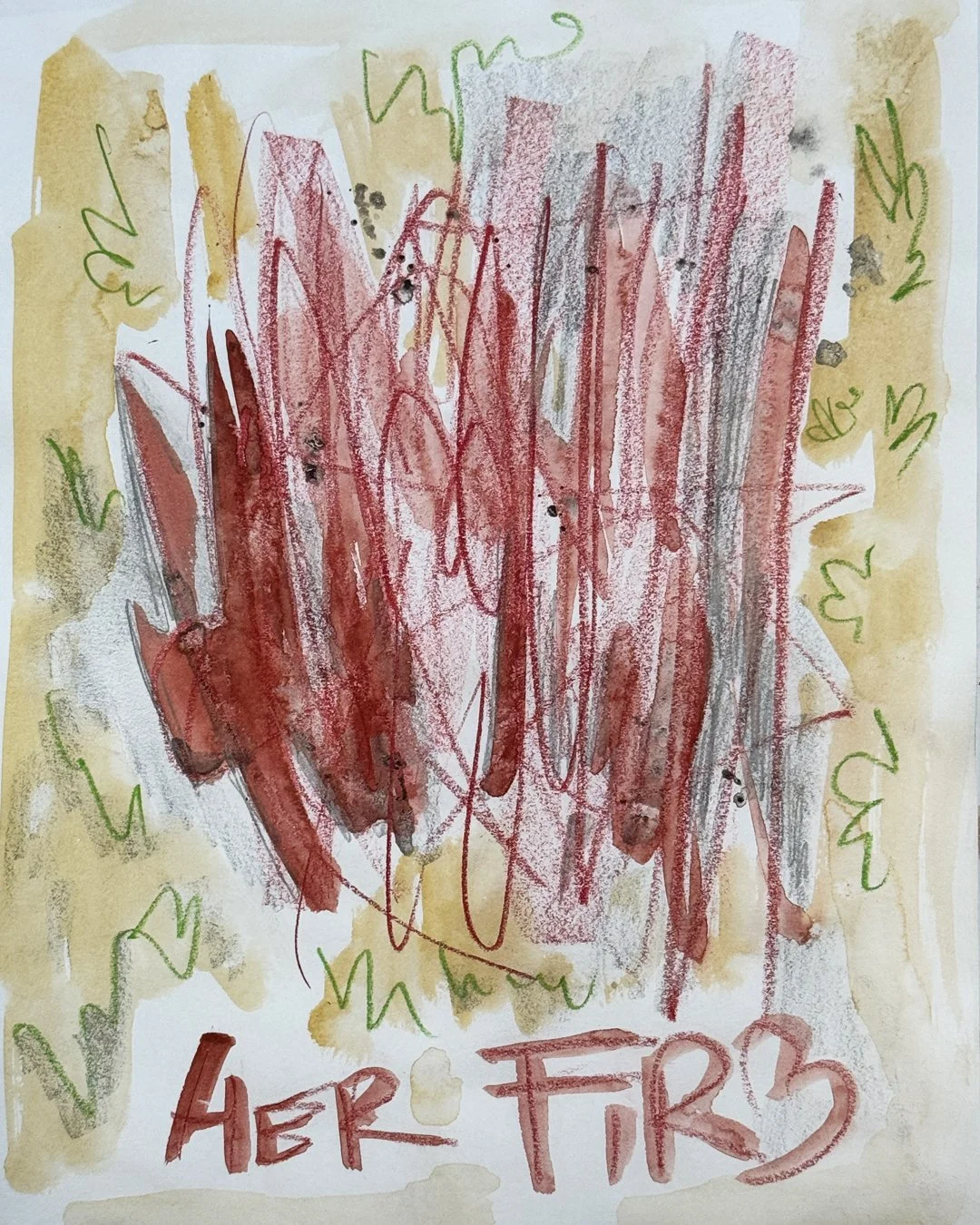In process. Winter 2025.
Introduction: Cacao, Work, and the Pages That Hold It All
Studies in Jewish mysticism become improvised watercolors. My brush dips into leftover cacao that I sip while working on social media for various brands—Rabbi Aaron Raskin, the spiritual healer Vladimir Angert, and Abelow Sherman Architects, among others.
Between posts, calls, and editing, I return to my sketchbook.
The pages hold everything: fleeting thoughts, deep ideas, pigment spreading in ways I don’t control. A process that mirrors life itself.
I. The Spiral of Time & A Life Fully Lived
I put my watercolor brush in leftover cacao latte. Earthy tones. I let it flow.
Life is the same. The body moves, and this is how our soul expresses itself in the world. Time spirals. Meaning isn’t past or future. It’s contained in the eternal now.
I learn that time is a spiral, and we move with it, embracing that we don’t have all the answers to what happens in the world or in our lives. With that, I am able to find meaning in the momentum—the flow—and trust that there’s a bigger picture. That’s the spiral.
This is where passion becomes something more. The fire of hunger, of desire—it doesn’t need to be extinguished. It needs to be transformed. In Kabbalah, this is the work of elevating the midos—refining emotions that are initially controlled by the animal soul (nefesh habehamis). The instinct to consume can become the instinct to create. The yearning for something fleeting can turn into devotion to something eternal.
That’s what this sketchbook is. The fruit, the leaves, the fire in red pigment represent an embracing of the material world, with devotion to a higher purpose. The vitality is the growth of the personality through time. The body stays in motion. The act of making. It is all a way of stepping into the flow, letting passion be fuel rather than distraction.
II. Her Fire: The Soul’s Longing
In Jungian thought, the anima is the inner feminine—the guide, the muse. Jewish mysticism refers to subtle interpretations of verses in King David’s Psalms:
"The princess approaches the king, maidens in train."
The princess is the soul—the yechida, the deepest point of self—approaching the King, who is God.
This is the soul’s journey. She is love. She burns with desire, but not for what fades and allures with great volume, but rather whispers with subtle patience. In me, passion is being refined, transformed. The heart’s passion, which she symbolizes, is consumed by the great fire from heaven, united with the yechida, and finds expression in this world, through the body, which she and I are masters of.
My sketchbook captures this process. The rawness. The movement of color. The tension of being human—yearning, reaching, refining.
Love for life, for God, for truth. The fire that warms, not consumes.
III. The Mystic Artist: Guitar, Creation, and the Infinite
A guitar. A brush. The movement of a line, the vibration of a string.
To create is to step into something ancient. The Kabbalists say the world began with tzimtzum—contraction, making space for something new. Creation is born in absence. The blank page, which I draw a line across.
Reflecting and mirroring empty space against a figure—his vessel-like head receiving divine flow—I portray this mystical concept that I learn in yeshiva in Brooklyn.
In my record production, I think about space in sound: giving air to the drums, bass, and guitar, allowing the listener to hear each instrument in its fullness. Just as I wish to embrace life in the material world completely, but in a refined way. Every artist, every mystic, works within this same paradox: the desire to create, the need to hold back and refine.
And just as every artist has a muse, every mystic has a counterpart.
If I am the artist, she is the psychologist.
This is a narrative expression of the Kabbalistic concept of Chokma & Bina. The masculine is Chokma — flash of inspiration — and Bina is the feminine counterposition, which develops the initially pure spiritual force.
I create, she analyzes. I pull chaos onto the page, she makes sense of it. If my world is sound and color, hers is structure and depth. She sees the pattern where I see the parts.
Together, we hold both sides.
Conclusion: Living the Art
This sketchbook is not a project. It is not a side practice. It is a way of being.
To live as an artist is to live in the spiral—to understand time as layered, to allow passion to refine itself, to seek meaning in the act of making.
To live as a mystic is to see every act as part of something greater.
And to love—to love life, to love the world, to love another—is to let the fire burn in the right direction. To take what is raw and turn it into something real.
This is the work. This is the life.
And this is only the beginning.













